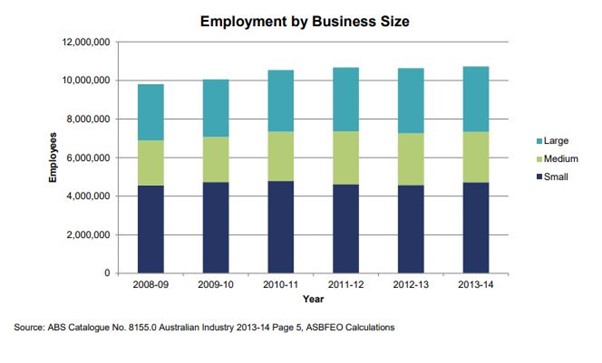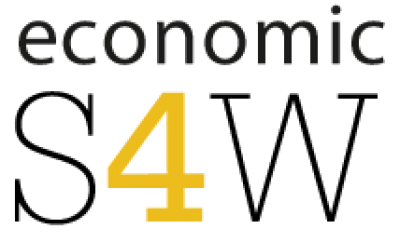How Women Owned Businesses Impact Women’s Economic Security
How Women Owned Businesses Impact Women’s Economic Security
Discussion Paper – February 2021
The number of Australian women operating their own businesses has steadily increased over the past 20 years. Internationally, Australia’s experience is similar to that of the United Kingdom, where in recent years the number of women in self-employment has been increasing at a faster rate than the number of men. There has been a 46 per cent increase in the number of women business operators over the past two decades.
Women are starting their own businesses to continue their participation in the workforce and are using their education, skills and training to develop flexible working models around caring responsibilities.
And it is working:
- Women business operators have high levels of life satisfaction (57 per cent were pleased or delighted with the quality of their lives, 30 per cent mostly satisfied).
- The Household, Income and Labour Dynamics in Australia (HILDA) Survey found across every year of their longitudinal data (2001 to 2011) that self-employed women had higher job satisfaction than all other female workers.
Small businesses are a large part of Australia’s economy and the least assisted
Small Business in the Australian Economy Report states that the vast majority (over nine in ten) of Australian businesses are small businesses

Small businesses account for 33 per cent of Australia’s GDP

Small businesses:
- Employ over 40 per cent of Australia’s workforce
- Pay around 12 per cent of total company tax revenue
- Only 15 per cent of small businesses report receiving any form of government assistance, compared to 30 per cent of medium businesses and 57 per cent of large businesses.
- Only 3,700 Australian firms employed over 200 people in 2015, meaning that large businesses account for only 0.2 per cent of all Australian businesses.

Nurturing the small business sector has been a bipartisan policy aim at the Commonwealth and State government level for many years. Procurement and other policies focusing on women owned business will enhance the growth opportunities for the small business sector.
Women owned businesses are diverse
Hard data on women owned and run business is sporadic. The following research draws together those findings and reaches conclusions about policy changes that can enhance the success of women owned businesses. Some key facts on women owned and run businesses are presented, along with recommendations to enhance women in business over the medium term.
According to the ABS Women in Business report (2015):
- More than two in five women business operators were aged 40-54 (44 per cent).
- 42 per cent of women business operators had a diploma or degree.
- One in two women business operators did voluntary work for an organisation or group (52 per cent).
- 47 per cent worked from home, which was long before it became normalised during COVID-19. This clearly shows the flexibility of many women run businesses.
- Almost a third of Australian women business operators were born overseas.
- 6 per cent were owned by an Aboriginal or Torres Strait Islander.
- 12 per cent had a disability compared to 20 per cent of Australians having a disability.
- 31 per cent lived in regional Australia. 47 per cent of women business operators had dependent children living in their household.
As is often the case, the parenting and income earning roles were able to be combined by women running their own businesses. Women who operated businesses were the most likely employed people to have dependent children.
- 81 per cent of women business operators were mothers (of children of any age) compared with 57 per cent of women employees.
- 6 per cent of women business operators were primary carers of a person with disability, compared with 4 per cent of other employed women, and 1.4 per cent of employed men.
Performance of Women Owned Businesses
In Australia, a 2003 study using ABS Business Longitudinal Survey data from 1995-96 to 1997-98 (when owner gender was collected) found no significant differences in financial performance and business growth between Australian women’s and men’s businesses. In 2013, women were just as likely as men to have multiple contracts underway.
In 2012, a national research project commissioned by the Australian Women Chamber of Commerce & Industry found that less than 20 per cent of Australian women business owners were tendering for local, State and Federal Government contracts around Australia, but of those that tendered, 60 per cent were successful.
The eS4W roundtables held with women owned businesses and networks in November 2020 demonstrated that collaboration was an opportunity for business growth and that a significant majority of businesses purchased from other women owned businesses.
Lack of finance was the main reason most women (58 per cent) gave for not starting a business when they had been considering doing so.
The round table discussions revealed a number of other issues:
- Many women start their own businesses out of necessity. This arose due to difficulty finding a flexible job as they juggled the caring and income earning parts of their lives.
- Access to finance was a constraint on starting a business and then again when expansion plans were being made.
- A high proportion of women run businesses exist in regional and remote areas and they would likely benefit from policies to decentralize the population.
- Financial education and ‘literacy’ were an important issue, including paying superannuation to themselves. Many women business owners overlooked superannuation in the challenge of current income and business profitability.
Recommendations
- Introduce Gender Equality Procurement Principles and SME targets as part of Government and Business purchasing to create representative, ethical supply chains
- Introduce Gender Equality Procurement reporting as part of the Workplace Gender Equality Agency annual reporting cycle
- Allow SMEs under 100 employees access to a simplified Workplace Gender Equality Agency (WGEA) reporting mechanism that is voluntary, so that data can be captured on how women owned businesses are creating gender equality and women’s economic security
- Provide greater access to growth opportunities for example, increasing the number of industries supported by the Federal Government Entrepreneurs Program, and reducing the turnover threshold to participate for women owned businesses to the same level as rural and Northern Australia – $750,000.
- Develop a program to support small businesses that have grown beyond start-up phase, but not yet reached mid-size, that is inclusive of diverse businesses.
- Continue the Federal Government Boosting Female Founders program, but make the criteria more inclusive, allowing the businesses to be 50 per cent female owned as many Founders develop the business in a family trust with their sons, brothers and husbands.
